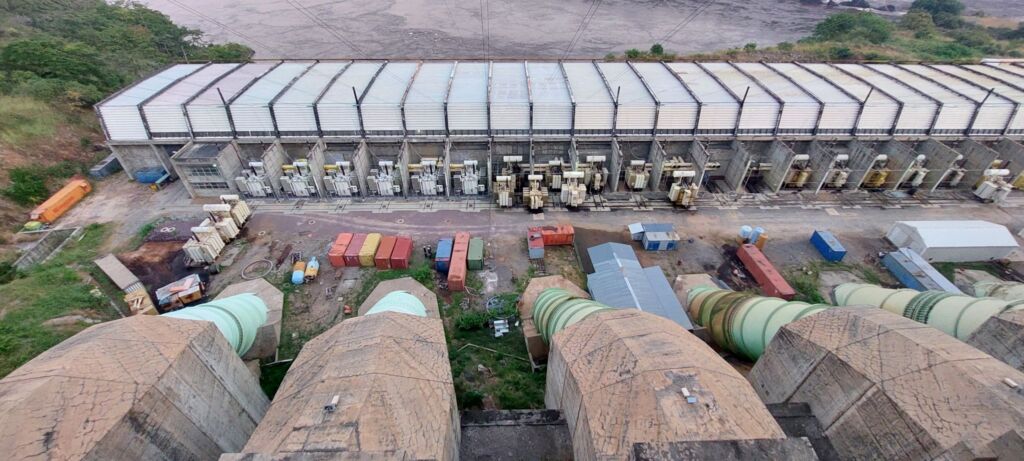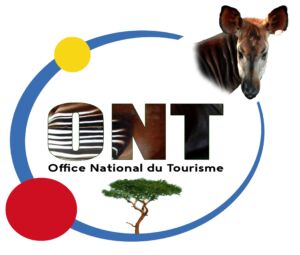We at Congo Travel and Tours are very proud to offer this exclusive tour to Inga Dam. We are the only travel agency in all of Congo-Kinshasa who has permission to enter the site. This is our proposition for an overnight tour to the Inga Dam in which you can not only see the massive rapids on the Congo River, but you’ll also get an exclusive tour on the inside of the dam visiting the turbines, the control room and we’ll also stay in one of the guesthouses on the beautiful compound for the people who work at Inga Dam. This tour is ideal to combine with other destinations in Bas-Congo such as Zongo Falls, Vampa Falls, Kisantu and Mbanza-Ngungu. Please, let us know how many days you have and we’ll set it up for you.
You’ll have to ask us well in advance, as the process can take several weeks to get permission!!
The Inga Dam is a dam on the Inga Falls in the Democratic Republic of Congo (DRC) where the Congo falls 100 meters down. The dam is located between the stream and the town of Inga.
In the 1950s, the Belgian colonial administration decided to build two dams in the river. Two hydroelectric power stations were built about 150 kilometers southwest of the capital Kinshasa. The Inga 1, with an installed capacity of 351 megawatts (MW) was completed in 1972. Ten years later, Inga 2 followed with a total capacity of 1424 MW. Inga 1 has six turbines of 58.5 MW and Inga 2 has eight turbines of 178 MW each. Due to a lack of maintenance, partly due to corruption, Inga 1 and Inga 2 are largely out of action: two turbines are still working in Inga 1 and two or three more turbines in Inga 2. The existing dams are generally regarded as white elephants owned by former President Mobutu Sese Seko.
The country has enormous potential for generating electricity through hydroelectric power plants. The total is estimated at 100 GW, placing the country in third place worldwide after the People's Republic of China and Russia. At the Inga site, the estimated potential is 40GW, of which only a fraction is being utilized. Since almost all of the DRC's electricity production depends on Inga, the World Bank is considering investing in the rehabilitation.
In 2016 there were plans for Inga 3 (about 4800 MW) and for Grand Inga, a gigantic hydroelectric power plant with a capacity of 39,000 MW. The planned site for the Inga 3 was close to the existing two, so investment is relatively limited. [South Africa has committed to purchase electricity from 2500 MW of capacity, the rest being more or less divided equally or the important Katanga mining area in the extreme southeast of the country. The rest went to the national electricity distributor Société nationale d'électricité (SNEL). About 35,000 people had to move for construction. There were serious doubts whether the interests of these people and the environment were sufficiently taken into account during construction. IDA, part of the World Bank, therefore withdrew financial support for the project. In October 2017, the construction of Inga 3 was postponed. The expected delivery date shifted from 2020-2021 to 2024-2025. No reason was given for this, but the financing of the project was difficult.
Itinerary:
For this trip we’ll need to drive 8 hours and we’ll have to leave Kinshasa at 5 am. Once we’re at the site, we’ll have to register ourselves with the authorities and then we’ll get to see the dam and the premises. The day after we’ll leave around 9 am, to arrive in Kinshasa in the early evening. It is better to add two days or so including Kisantu and Zongo or Vampa Falls.
“How are you? Have you recovered from our adventure in Congo?I am at Toronto Airport on my way home and have finally found a working online connection. The gorilla watching was absolutely great (and easy on the body).First of all I want to apologize for not taking some (more) time to talk to you at Brazzaville Airport. I was really stressed out.Ethiopian Air cancelled my booking when I could not produce a credit card that paid for the flight. I could not produce it because my bank had forced me to get a new one because my old one was threatened with fraud. No discussion would change their mind so I had to buy a new ticket for USD 1,100! I was in the middle of this discussion when you brought my luggage up. The ticket agent said I could make the flight if I got the ticket bought in 10 minutes. Again my apologies for being short with you.My sincere thanks to you and the cooler for making a potentially really tough trip really kind of fun. Without you my trip would have been a disaster.Please keep in touch and let me know how you are doing.Thanks again,"
- John Patterson, Nouabale Ndoki National Park Safari





































